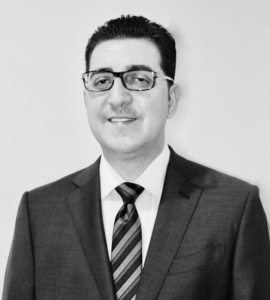Current direct endovascular therapy [EVT] access for acute ischaemic stroke within 15 minutes is limited to one-fifth of the US population, concludes a recent study presented by Amrou Sarraj at the International Stroke Conference (ISC; 19–21 February, Los Angeles, USA), simultaneously published in Stroke. Sarraj, University of Texas (Houston, USA), also highlighted that while results varied by state based on both population size and density, optimisation strategies that increase EVT centres or bypass non-EVT to the closest EVT centre elicited enhanced access.
Given this, the Sarraj called for national and state efforts to focus on identifying gaps and “tailoring solutions to improve EVT access”.
Sarraj and colleagues started the investigation by geo-mapping US stroke-treating centres. They subsequently stratified them into non-EVT or EVT, dependent on whether they reported ≥1 acute ischaemic stroke thrombectomy code in 2017 to the Center for Medicare and Medicaid Services. They noted that direct EVT-access (the population with the closest facility being an EVT centre) was calculated from validated trauma models adapted for stroke.
Current 15- and 30-minute access were described nationwide and at state-level with emphasis on four states in the USA: Texas, New York, California, Illinois.

“The study used two optimisation models,” explained Sarraj. Model-A used a greedy algorithm to capture the largest population with direct access when flipping 10% and 20% non-EVT to EVT-centres to maximise access. In contrast, Model-B used bypassing methodology to directly transport patients to the nearest EVT centre if the drive-time difference from the geocentroid to the hospital was within 15 minutes from the geocentroid to the closest non-EVT centre.
Of the 1,941 stroke centres mapped, 713 (37%) were EVT. Thus, Sarraj reported that “approximately 61 million (19.8%) of Americans have direct EVT access within 15 minutes, while 95 million (30.9%) are within 20 minutes”.
In Texas, there were 65 (43%) EVT centres, with 22% of the population within 15-minute access. “Flipping 10% hospitals with top population density improved access to 30.8%, while bypassing resulted in 45.5% having direct access to EVT centres,” Sarraj added.
The team observed similar results in New York (current, 20.9%; flipping, 34.7%; bypassing, 50.4%), California (current, 25.5%; flipping, 37.3%; bypassing, 53.9%), and Illinois (current, 15.3%; flipping, 21.9%; bypassing, 34.6%).
Nationwide, the Sarraj said that current direct access within 15 minutes of 19.8% increased by 7.5% by flipping the top 10% non-EVT to EVT-capable in all states. Bypassing non-EVT centres by 15 minutes resulted in a 16.7% gain in coverage.
Regardless of the bypass approach being more beneficial in most states, he highlighted that some states demonstrated better access by flipping. “This signifies the heterogeneity among different optimisation approaches demonstrated based on population density, urban versus suburban areas, and current distribution of EVT-capable centres in different states.
“These methodologies, when applied locoregionally, can help identify the best approach to maximise EVT access and in conjunction with the availability of resources to improve local health policy development.”
However, addressing ISC delegates, Sarraj asserted that “these are hypothetical models, and the come with a cost”. He said that interventionalists and their salaries need to be taken into account, as well as the infrastructure—the angiosuite—and training technicians. “While the bypass model may sound easy, you need to train the EMS [Emergency Medical Services] to identify large vessel occlusion [LVO]. You may over-triage and bring patients that do not have LVO to the centres. You would deprive centres from tPA patients; overwhelming the thrombectomy centres.
“It has to be tailored, by centre, state, needs and by the current availability”.
Alluding to the current caveats of the research, Sarraj said that the team only focused on EVT access and not on clinical outcome, which they hope to assess next. He added that hospitals beginning EVT after 2017 were not included, while the investigators used ICD-10 codes, “which are sometimes not accurate”.













